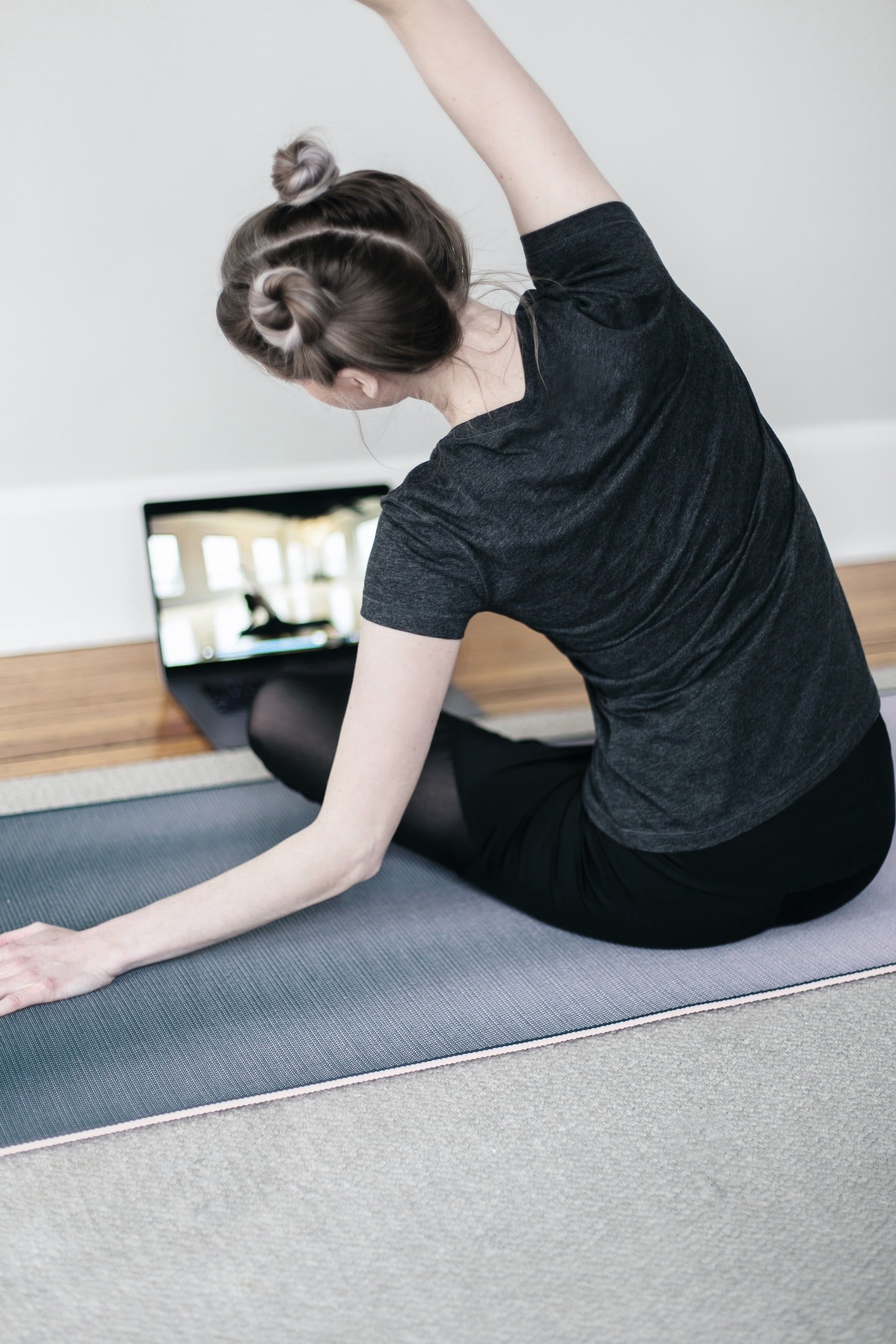
Frequently Asked Questions
-
Currently, I’m living in the midwest and only offer virtual sessions via Zoom. I make annual trips to Los Angeles to see clients and offer workshops; my booking calendar will show available in-person sessions when these trips are planned.
-
Based on overwhelming feedback from my students and clients, the short answer to this question is: you’ll go deeper in your practice with interactive virtual classes!
When you do a yoga video or stream a class (even if it’s live streaming), you’re basically watching other people do yoga and following along to the best of your ability. To get the most out of yoga, however, you need a set of experienced eyes on you, someone answer your questions and offer suggestions to adjust your form or modify poses for your particular tightness, injuries, and abilities.
Live, interactive yoga - even if it’s virtual - offers accountability, encouragement, safety, and a more personalized practice.
Since videos can’t monitor your form and the nuances of how your body moves into or out of poses, relying entirely on them is a good way to instill “bad habits”: movement patterns that ultimately lead to chronic pain and limited range of motion. A yoga video may include a pose that physically hurts when you try do it, leading to the assumption that “I can’t/shouldn’t do that pose”, when, in reality, you may simply need to adjust how you’re doing the pose.
During virtual classes, I may demonstrate poses or moves that you need to have a visual for, but I’m generally watching everyone practice to ensure they’re practicing safely and getting what they, personally, need from each pose. In a live, interactive virtual class, you can let me know when you have a question or are experiencing pain so I can help you better understand how to modify your practice!
Unlike videos or streaming, virtual classes also offer accountability. It’s easy to bail out or get distracted when it’s just a video, so if you know you need more encouragement to stay with it, live classes are the perfect solution.
You can also learn more - about your body and about yoga - through virtual classes because they’re interactive. With virtual classes, you can unmute yourself and ask questions as they arise instead of feeling adrift or unsure about whether you’re doing a pose correctly. During the pre-class check-in, let me know if there’s a pose that’s always confused you, a yoga concept you’d like to explore, or an aspect of anatomy you want to understand - I’ll weave that into the practice so you’re getting both what your body needs and what interests your mind!
If you’re happy with what you get from yoga videos, by all means, stick with what’s working for you. But if you want to delve deeper and engage in yoga as an integrated life practice and healing tool, my virtual classes will take you to that next level!
-
Absolutely! When you join Tapas Membership, you’ll have access to replays of the current week’s classes as well as on-demand access to 50+ hours of Tapas Yoga, Slow Deep Stretch, Core Yoga, Energetic Alignment, Vinyasa Yoga, and Qigong & Meditation class recordings. There’s a practice for pretty much any need you may have on any given day. And, as a Member, you can always request a specific topic be addressed in a practice (even if you can’t attend live) so you can do it on your own time!
-
I hear you! At first, I was incredibly uncomfortable with the idea of teaching virtually and it took a few classes for me to get used to it.
Since I teach specifically to the students present, I need to be able to see you as you practice (video on) in order to teach meaningfully and safely - but throughout each class, my screen is spotlighted so it shows as the main image for everyone, and the recordings of classes only show my screen. If you unmute to ask a question, your audio will be included in the recording, but your video will not.
When you register for a single class, you’ll receive the Zoom link in your confirmation email. Tapas Members have access to all class links on the Membership Homepage.
To join a class, click the Zoom link. If it’s your first time using Zoom, you’ll need to allow access to your computer’s microphone and camera. The initial set-up for Zoom may take 5-10 minutes, so allow time to work out any kinks that may arise.
When class starts and we’re all in the Zoom room, I take requests: I ask how everyone is feeling, what’s their energy level today, what areas of the body they want to focus on stretching or strengthening, or if there are types of poses (backbends, twists, etc) that they want to get into. Requests vary from class to class, making each practice unique and interesting. Feel free to unmute yourself and ask for what you need!
Before I start teaching, I mute all participants and start recording my screen. Then, practice begins.
During class, I’ll demonstrate some poses and use verbal cues while keeping an eye on students. Throughout class, I offer detailed feedback, suggestions, and alternative poses to individual students and the group as a whole.
At any point during practice, you’re able to unmute yourself to ask questions about the pose, what you’re feeling, or how you can modify what you’re doing. This is the beauty of a live virtual class - unlike passively following along to a video, you’re able to actually ask for clarification or let me know if something doesn’t feel “right” so we can adjust your practice in the moment!
-
Most of the classes I offer are accessible for beginners!
Yoga Blend is a slow-paced, level 1 class combining qigong and yoga. You’ll build strength and flexibility; become familiar with the language of yoga and qigong; and deepen your connection to and awareness of your body.
Rise & Shine Yoga is another good option - this is a gentle stretch-focused practice intended to ease the mind and body into the day. It’s a great way to destress and accessible for all ranges of flexibility.
The Tuesday Grounding Yoga class is also beginner-friendly. We usually do more floorwork - seated and reclined poses - to stretch and strengthen, with a grounding focus to wind down at the end of the day.
Qigong is accessible to all, with no experience necessary. This practice may be seated or standing, with movements that will teach the body how to move with “effortless action” and ease.
What will I need to practice at home?
-
A yoga mat, 2 yoga blocks, and a yoga strap. These are the basic tools of any home yoga practice. If you don’t have a yoga strap, a long belt or a bathrobe tie (anything non-elastic) works just a well. If you’re missing any of these props, just let me know at the beginning of class and we’ll practice without them!
A LARGE towel or blanket. This is a MUST with the practice I teach! We may use it for padding (under knees, for example), but often we roll it up to use as a unique yoga prop for various poses.
-
The tools we use vary from week to week based on what we’ll be doing. When Winter Self-Care is on the schedule, my homepage and the Membership Homepage will include details of what you’ll need for that week’s class.
Tools we use may include:
lotion
hot water
washcloths or a towel
sea salt or epsom salt
a heating pad
various yoga props
If you don’t have all of the supplies on hand for the class, just let me know that when you arrive!
-
These practices don’t require any props, just a comfortable, distraction-free place to sit!
Make it stand out.

